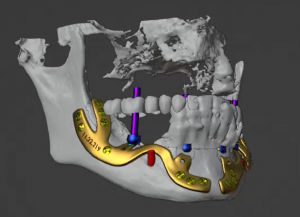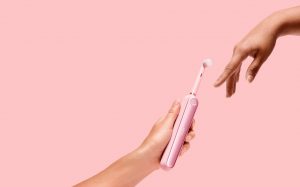One of the most common treatments in dental practices is certainly teeth whitening. It involves a simple and non-invasive procedure to correct their color.
Although the color of the teeth primarily depends on the thickness of the dentin, which is yellowish in color, and the enamel, which is transparent, there are many other factors that significantly affect the color of the teeth in some patients. Among these factors, the following are particularly important:
- diet or consumption of highly pigmented foods or beverages such as coffee, wine and various teas
- lifestyle habits, especially related to the consumption of tobacco that leaves yellow-brown stains and pigmentation on the teeth
- tooth discoloration can also occur as a result of inadequately endodontically treated teeth, which can create a major aesthetic problem, especially if the treated front teeth are in the aesthetically visible zone of the smile.
TYPES OF BLEACHING
Although many commercial teeth whitening products, such as various whitening pastes or strips, are easily available to us today, professional whitening is still preferred.
There are two basic methods of professional whitening, and they are: whitening in the office (ZOOM lamp) and the so-called “bleeching at home” which means bleaching with splints and low-percentage gels. Also, in certain situations, a combination of these two methods is recommended for teeth with a more pronounced “yellow” undertone.
Each of these methods has its advantages and disadvantages, and the most important thing is to perform a detailed dental examination before deciding on whitening, which will first assess whether you are a candidate for whitening, and only then choose the most appropriate whitening method.
It is important to note that some patients, who have prosthetic replacements or large fillings on their front teeth, are unfortunately not ideal candidates. If bleaching is done with them, after the procedure it will be necessary to replace old fillings or prosthetic replacements in order to match the color with the newly achieved paint.
No matter which whitening method you choose, the first and common step in both methods is to remove surface stains, soft and hard deposits, which is easily done by cleaning tartar and plaque and polishing the teeth with a special paste. In this way, the tooth surface is cleaned and prepared for the penetration of whitening gel into the surface of the tooth tissue.
DOES BLEACHING DAMAGE ENTIRE ENAMEL?
One of the first and most common questions asked by patients interested in whitening is “does the whitening process itself damage tooth enamel?”.
The harmlessness of bleaching justifies the mechanism of action of the bleaching gel, which is achieved by the fact that said gel does not change the composition of the enamel but only oxidizes the pigments present on its surface. Therefore, the action of whitening gel is limited only to tooth enamel and in no way reduces its quality.
Sensitivity, which can potentially occur after bleaching, is considered a normal occurrence and manifests itself only as occasional, short-term pain lasting a few seconds, on the first day after bleaching. This pain is not a sign of damage to the enamel, but is a consequence of dehydration of the teeth and open micropores in the enamel, the opening of which occurs as a result of the removal of pigment particles from the enamel. When these pores are closed in 1-2 days and when the teeth are “hydrated” again, the sensitivity disappears, and the beautiful white color of the teeth remains!
If whitening procedures are not performed in a professional enough way, complications can occur during whitening, the most important of which is the chemical damage to the gums and mucous membranes of the oral cavity with whitening gel. Such damage most often occurs as a result of improperly insulated and protected gums before performing the whitening procedure.
Due to all the above, it is recommended that you do not whiten your teeth on your own. Regardless of the type and origin of tooth staining, thanks to the state-of-the-art technology in our clinic, we easily and painlessly achieve top results in restoring the natural whiteness of teeth. Put yourself in the hands of our professional team and shine with a new smile! 🙂




